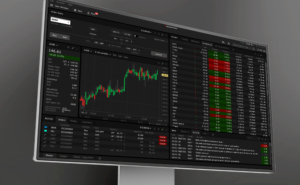Personal income slowed to 0.3% month-on-month (m/m) in April, down from March’s 0.5% gain, but in line with market expectations .
Accounting for inflation and taxes, real personal disposable income declined -0.1% m/m in April, reversing all of last month’s gain.
Personal consumption expenditures rose by 0.2% m/m. This is lower than the revised 0.7% recorded in March (0.8% previously), and also below market expectations (0.3%). Spending in real terms slid by -0.1% m/m – a pullback from 0.4% growth in March. The decline in real spending reflected declines in both goods (-0.4%) and services (-0.5%) outlays.
On inflation, the Fed’s preferred inflation metric, the core PCE price deflator, decelerated on a monthly basis, and held steady annually. The measure fell from 0.3% to 0.2% month-over-month and remained at 2.8% annually. While the annual reading was in line with market expectations, the monthly number came in marginally lower than expected (0.3%).
The personal savings rate remained at 3.6% for the second consecutive month.
Key Implications
The downward revision to Q1 consumer spending and lackluster start to Q2 add to the collection of evidence pointing to a slowing U.S. economy. Expectations that labor demand will continue to soften combined with decelerating wage growth should also exert further downward pressure. As such, consumer spending, while not grinding to a halt, is expected to continue losing some momentum as the year progresses.
Given the break in upside inflation surprises with April’s CPI report, market participants were hopeful that the Fed’s preferred inflation gauge, would also post some good news. Today’s core PCE deflator delivered on that front. The monthly figure cooled, and the 3-month annualized change decelerated for the first time in four months (from 4.4% to 3.5%). While April’s inflation numbers are headed in the right direction once again, Fed governors are likely to continue their exercise in patience, with the first rate cut occurring closer to the end of the year.









